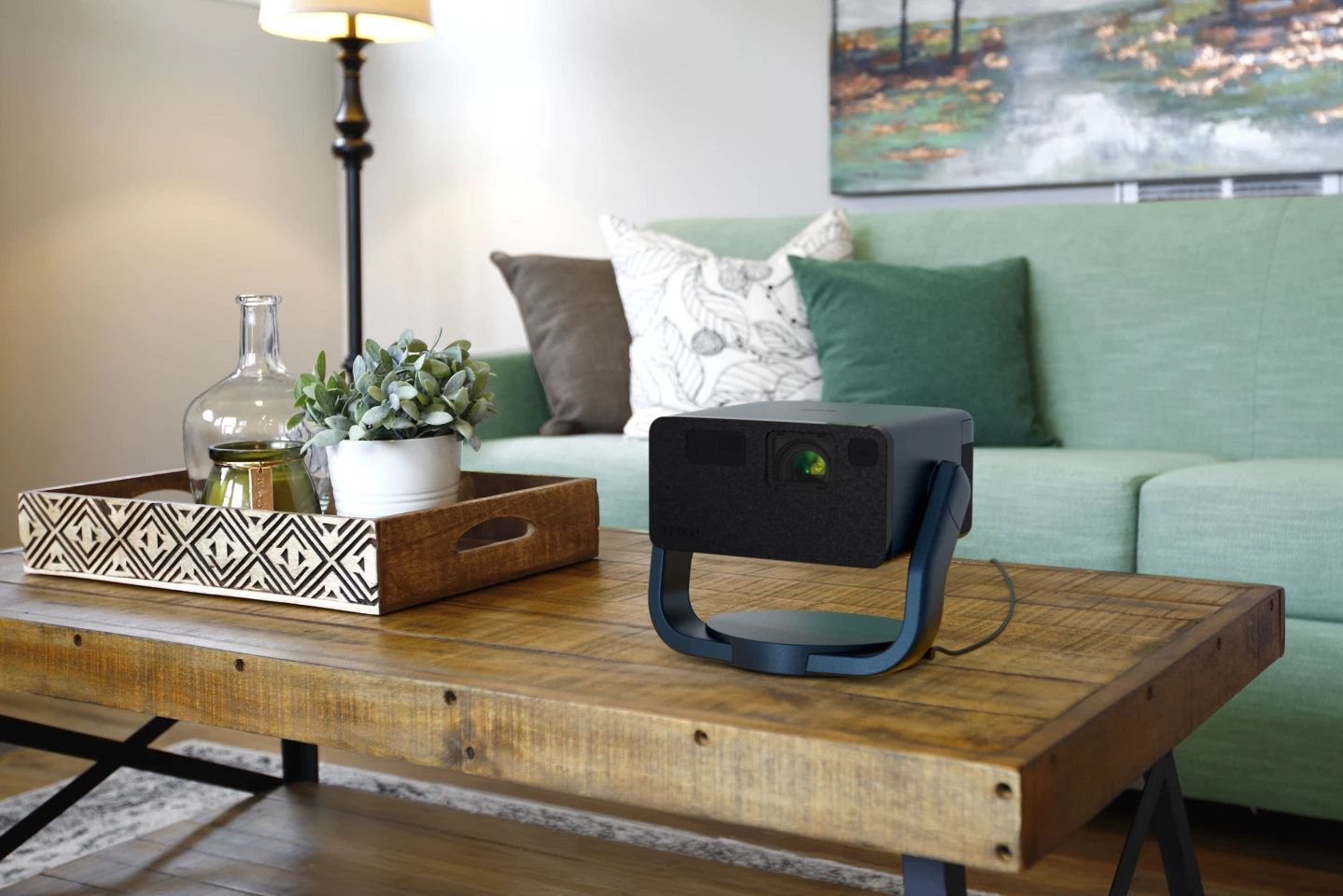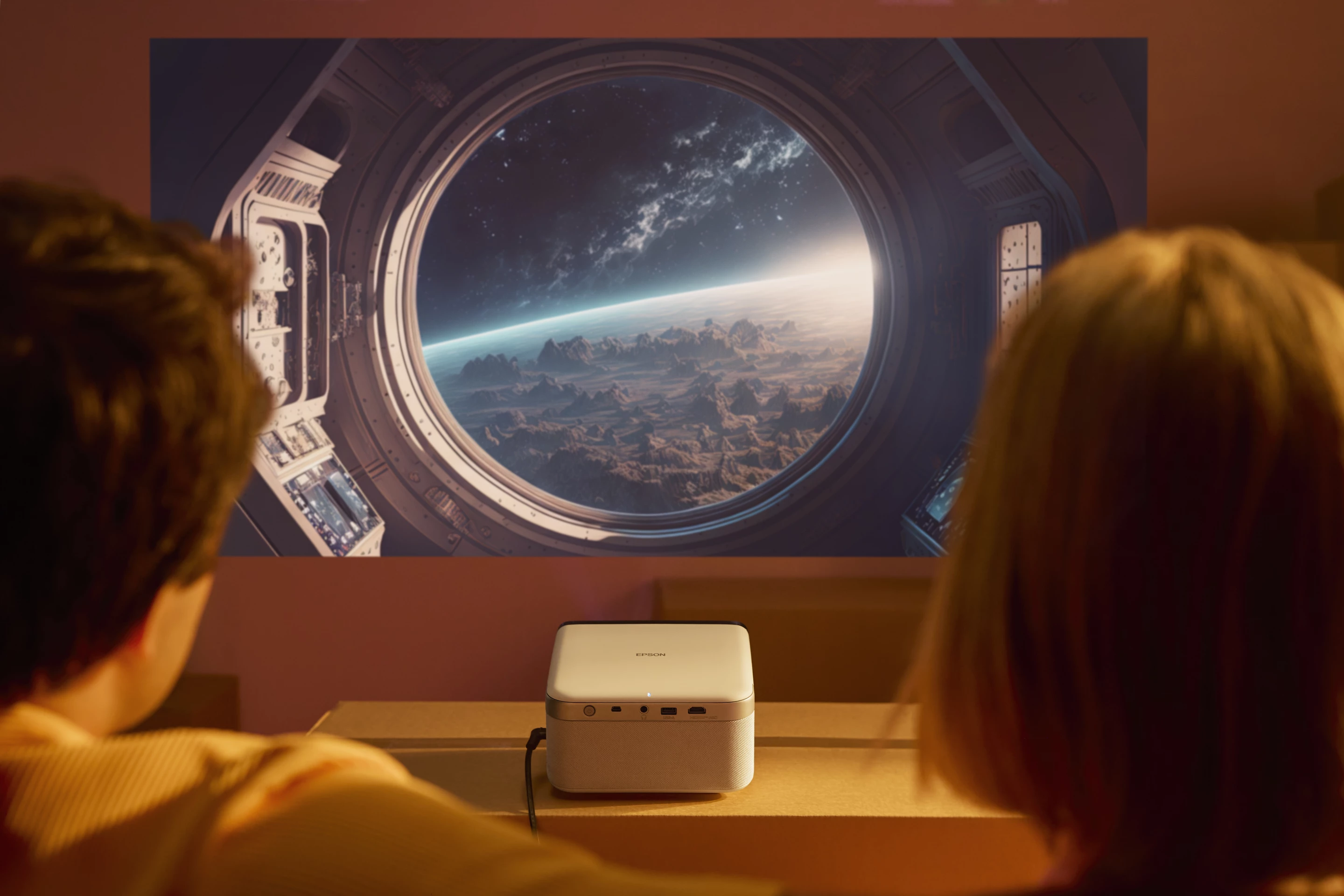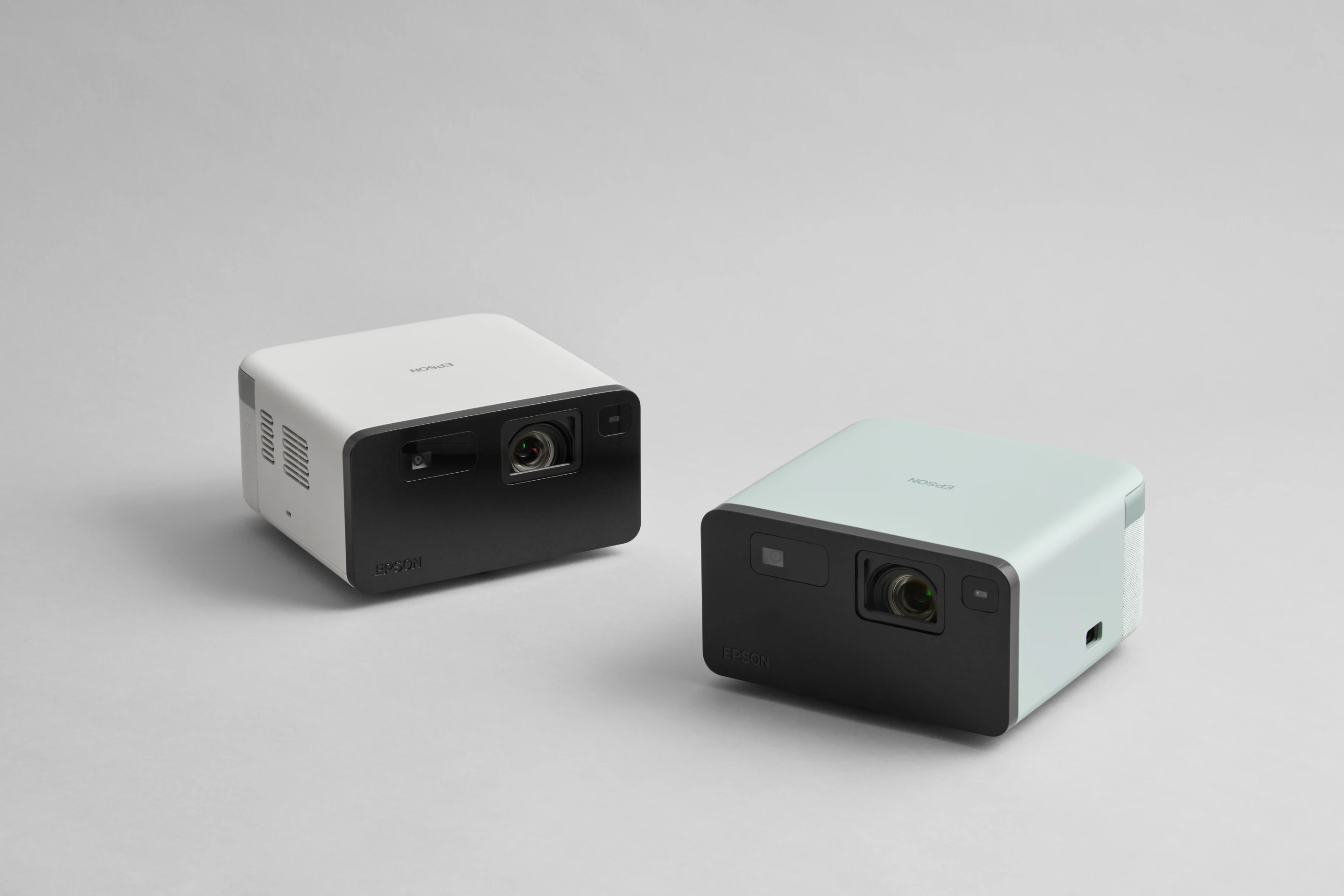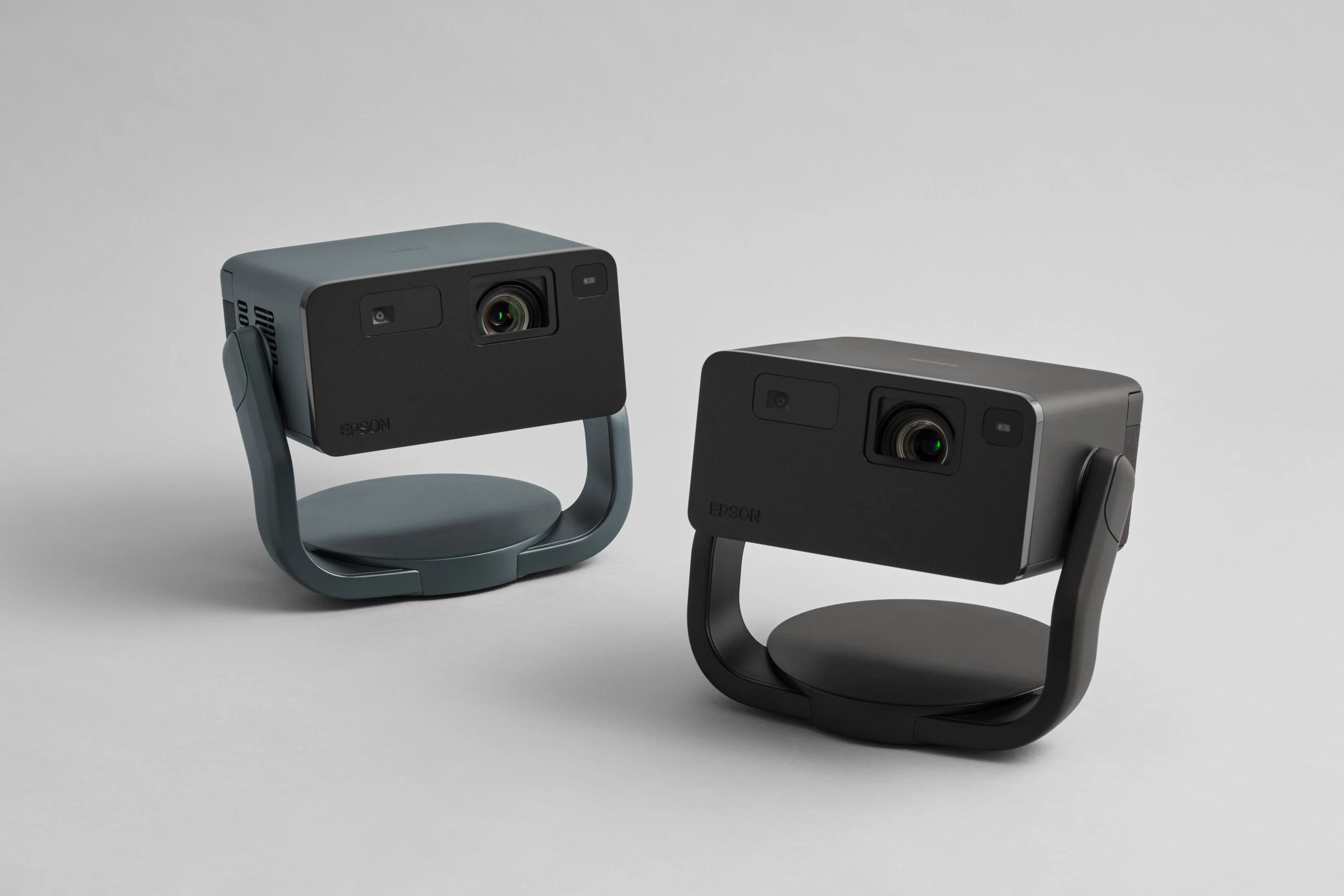Folks looking for an alternative to the room-dominating big-screen TV for their audiovisual entertainment are just the kind of people Epson is aiming for with its latest EpiqVision smart mini projectors.
"We are on a mission to get more people using projectors every day in their homes, and these two projectors are going to really help this goal," said Epson Europe's Brendan Hoare. "With their sleek and sophisticated design, not only will they look great in any home, they are packed with so many features and incredibly easy to set up and use. With smart connectivity, and high-quality long-lasting laser light source, there’s never been a better time to consider replacing your TV."
The EF-21 and EF-22 models are essentially the same projector, but the latter adds a passive radiator to the built-in sound system for improved bass response, comes mounted to an adjustable (vertical/horizontal) stand for setup ease and sports different colored housing.

Each is based around a laser light source and Epson's 3LCD projection technology, which "dedicates an entire chip to process each primary color continuously" for the promise of true-to-life color and vibrant, realistic imagery.
The projectors throw 1080p visuals at up to 150 inches at a throw ratio of 1.82:1 – meaning viewers will get a 60-inch rectangle from a 52-inch gap between projector and vertical surface. The laser light source puts out 1,000 lumens of color/white brightness.
Epson says that deep blacks and crisp definition in the shadows are on the menu thanks to 5-million:1 contrast. HDR10 content is supported too, and the projectors also come with motorized autofocus, auto keystone correction, screen fit, and object avoidance to help make setup a breeze.

The EF-21 and EF-22 serve up streamed entertainment via Google TV and Wi-Fi connectivity, which should include officially sanctioned Netflix. Google Assistant is on hand for voice searches as well, and they're Chromecast ready for shared content from Android/iOS devices, Mac/Windows computers or Chromebooks. A single HDMI port (with audio return) caters for cabling to an external media source.
The integrated sound system of both models is made up of two 5-watt speakers, but the EF-22 gains a passive radiator. A headphone jack has also been included for quiet viewing.
The new EpiqVision mini projectors are due to go on sale in Europe from next month. The EF-21 wears a white or green finish and carries a price tag of €899 (£799 in the UK). The EF-22 will be available in black or blue for €1,099 (£999 in the UK). There's currently no word on US availability.
Source: Epson








